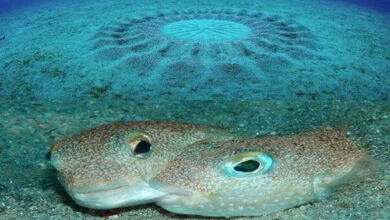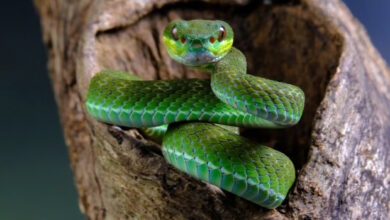The Curious History and Charming Traits of Polish Chickens
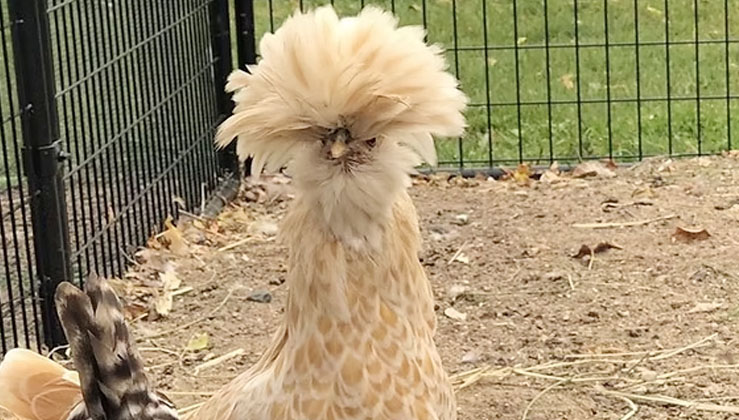
With their extravagant crests and intriguing origins, Polish chickens are among the most recognizable and endearing breeds. Discover their fascinating backstory, unique traits, and care needs.
A Regal Bird with a Mysterious Past
Chickens resembling today’s Polish breed have appeared in Dutch and Italian paintings as early as the 15th century and were mentioned in writings throughout the 1500s to 1700s. While their precise origin is unclear, one theory suggests they were brought to Central and Eastern Europe by Mongol invaders during the Middle Ages, potentially giving rise to the breed in Poland. Another theory claims they came from Spain to the Netherlands during the Spanish occupation of the Low Countries in the late 1500s. Regardless of their path, Dutch breeders in the 18th century are credited with refining the breed, especially enhancing its stunning crests and color patterns.
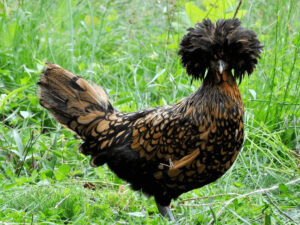
A Name Steeped in History
Over the centuries, Polish chickens have been called by various names including “Poland,” “Tophat,” and “Paduan.” Charles Darwin referred to all crested chickens as “Polish,” likely due to their resemblance to the feathered helmets worn by Polish soldiers. Alternatively, the name may derive from the Dutch word pol, meaning “large head,” a reference to their pronounced skull structure.
Arrival in Europe and America
By the 1700s, Polish chickens were already present in England and enjoyed popularity in France for their egg-laying abilities. They are believed to have arrived in the United States between 1830 and 1840 and had become widespread by 1850. Their popularity as egg producers waned in the mid- to late-1800s with the rise of the prolific Leghorn breed. However, Polish chickens remained favorites for poultry exhibitions due to their showy appearance.
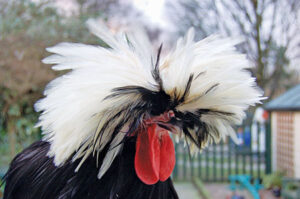
Recognized Varieties
The American Poultry Association recognized several varieties of Polish chickens over the years. The original group in 1874 included non-bearded White Crested Black, Golden, Silver, and White. Later additions were:
-1883: Bearded Golden, Bearded Silver, Bearded White, Bearded Buff Laced
-1938: Non-Bearded Buff Laced
-1963: Non-Bearded White Crested Blue
Unique Features and Personality
Polish chickens are best known for their dramatic head feathers. Their crest is supported by a bony skull protrusion, giving them their signature look. Hens sport neat, round crests like pom-poms, while roosters have wild, unruly feather mops. However, these crests can obscure their vision, making them prone to surprise and more vulnerable to predators. Their temperament is generally friendly and curious, but because of their limited vision, they can be easily startled. Speaking to them before approaching is recommended to avoid causing alarm. Some Polish chickens are also bearded, with facial feathering that adds to their unique charm.
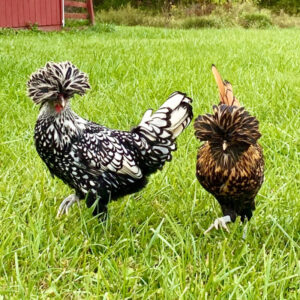
Physical Traits and Egg Production
Polish roosters have a red, V-shaped comb, though it’s often hidden under their crest. They also have red wattles, white earlobes, large nostrils, gray featherless legs, and four toes per foot. Hens lay approximately 150 medium-to-large white eggs per year. They typically start laying later in the season but continue reliably once they begin. Polish hens are non-sitters and rarely go broody. Their size is comparable to Leghorns: males weigh about 6 pounds and females around 4.5 pounds. Their skin is white.
Climate Needs and Care
Polish chickens prefer warm, dry climates and are reasonably heat-tolerant when provided with shade. Cold weather, however, poses a risk—especially to their crest feathers, which can become wet and freeze, leading to chilling. A dry, well-ventilated coop is essential for winter care. As lightweight birds, Polish chickens are capable flyers and may roost in tree branches if allowed. Though they are sociable and entertaining to keep, their crests mean they rely more on sound than sight. A little extra care and awareness go a long way in ensuring their safety and happiness.


